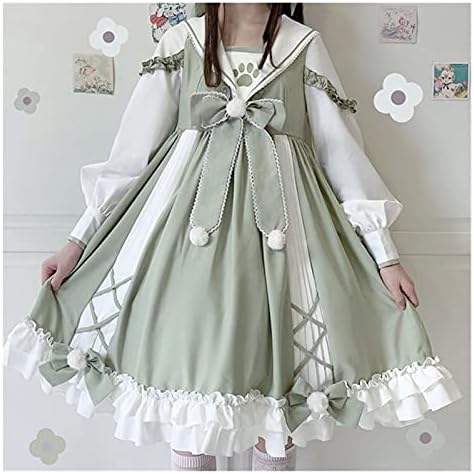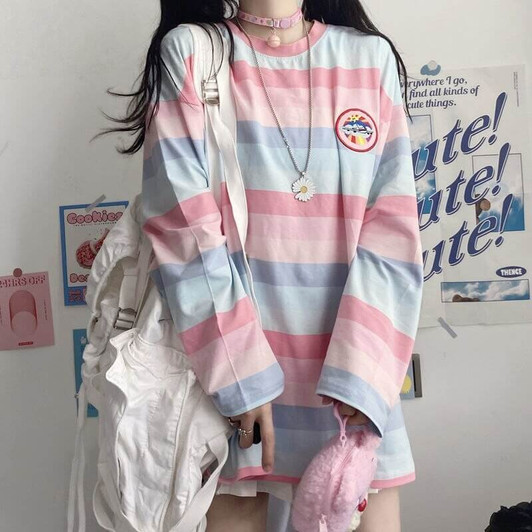1. Unraveling the Kawaii Phenomenon
1.1 The Origin of Kawaii Culture
‘Kawaii’ is a Japanese term that encapsulates the culture of cuteness within fashion, art, and daily life. This culture initially blossomed in Japan during the 1970s and has since gained a foothold around the world. Kawaii clothes often feature playful designs, pastel colors, and a wealth of adorable characters – an aesthetic that provides an escape from the pressures of adult life and fosters a youthful whimsy. Kawaii clothing is more than fashion; it’s a form of personal expression and identity within the scope of a broader societal trend.
1.2 Kawaii’s Spread to Global Popularity
While kawaii clothes have their roots deeply planted in Japanese culture, globalization has propelled this fashion trend across seas, capturing the hearts of people worldwide. The international appeal may be attributed to the rise of Japanese pop culture, including anime, manga, and Harajuku street fashion, the latter being a symbol of kawaii’s eclectic and personalized approach to dressing up. Social media, pop stars adopting the style, and the universal appeal of ‘cute’ have played a pivotal role in making kawaii clothing a global phenomenon.
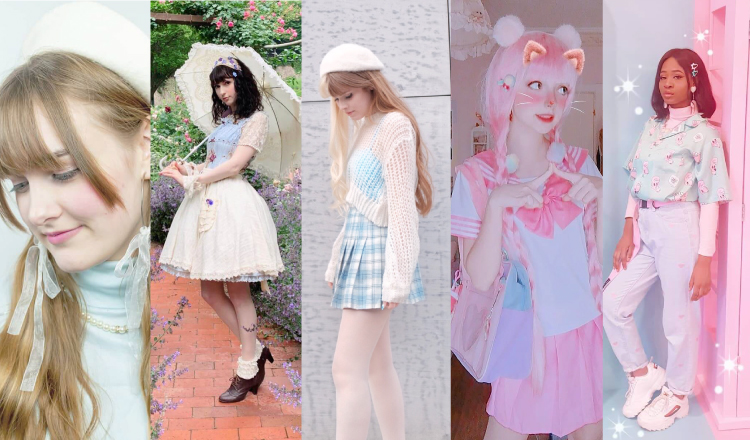
1.3 The Psychology Behind Kawaii Clothes
Psychologically, kawaii clothes tap into a primal instinct for affection and care, tied to features that often resemble the soft, harmless look of a young child or baby animal. Round shapes, soft textures, and vibrant colors found in kawaii fashion are all elements that trigger a nurturing response. Doling out daily wear in kawaii style can be uplifting, invigorating the spirits by inviting positive reactions from others and fulfilling a desire to express one’s playful side.
2. Characteristics and Style Elements of Kawaii Clothes
2.1 Identifying Kawaii Aesthetics
Kawaii clothing can be identified by a set of definitive elements that set it apart from other fashion styles. Notably, bright colors, particularly the use of pastels, dominate the kawaii palette, giving outfits a soft and inviting appeal. Patterns often involve cute animals, fantasy creatures, or popular characters from anime and manga. Additionally, adornments like bows, lace, and frills add a touch of whimsy, signaling the innocence and purity often associated with the kawaii look.
2.2 The Role of Accessories in Kawaii Fashion
In the kawaii wardrobe, accessories play more than just a complementary role – they are essential to the overall aesthetic. Accessories such as hair clips, hats, bags, and jewelry often take center stage, with designs that stand out for their creativity and charm. Popular motifs include animal ears, iconic bows, and plush items, all reinforcing the ensemble’s cute factor. The selection of these accessories is a personal choice that allows for a great deal of individuality within the kawaii scene.
2.3 The Influence of Subcultures within Kawaii Clothing
Within the realm of kawaii fashion, several subcultures contribute to an ever-evolving tapestry of styles. Lolita fashion, with its Victorian and Rococo influences, showcases the more formal, refined side of kawaii. Fairy Kei revolves around fairy-tale inspiration coupled with 80s pop culture, resulting in a dreamy, retro look. Decora style pushes the boundaries with an over-the-top approach to layering and accessorizing. Each subculture offers a distinctive interpretation of kawaii, demonstrating the versatility and breadth of the trend.
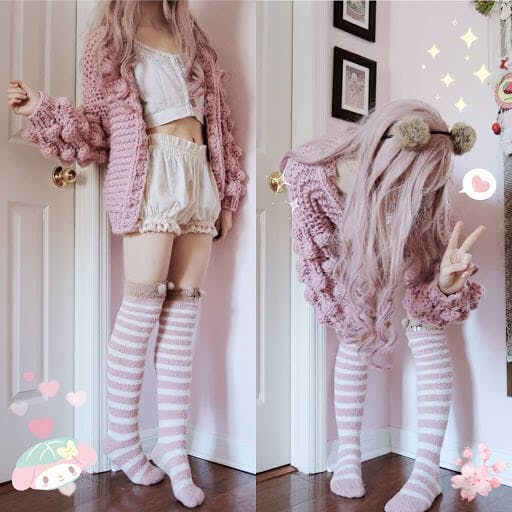
3. Kawaii Clothes in Practical Life
3.1 Incorporating Kawaii Clothing into Everyday Wear
One might assume that the exuberance of kawaii shirt limits their place to themed events or conventions; however, many individuals seamlessly integrate elements of kawaii fashion into their daily wardrobes. By choosing subtler pieces – such as tops with small, cute prints or accessories with kawaii motifs – wearers can add a touch of playfulness without overwhelming their outfits. This approach allows kawaii enthusiasts to pay homage to the style within the context of their work or school environments.
3.2 Customizing Kawaii Outfits for Personal Expression
Customization is a key aspect of kawaii clothing, with enthusiasts often applying their craft and creativity to modify and enhance store-bought pieces. DIY approaches, like adding patches, embroidery, or custom decals. Enable the expression of individual style and make each piece unique. For many, the process of personalizing kawaii clothes is as fulfilling as wearing them, allowing for the development of personal skills and an added emotional connection to the clothing.
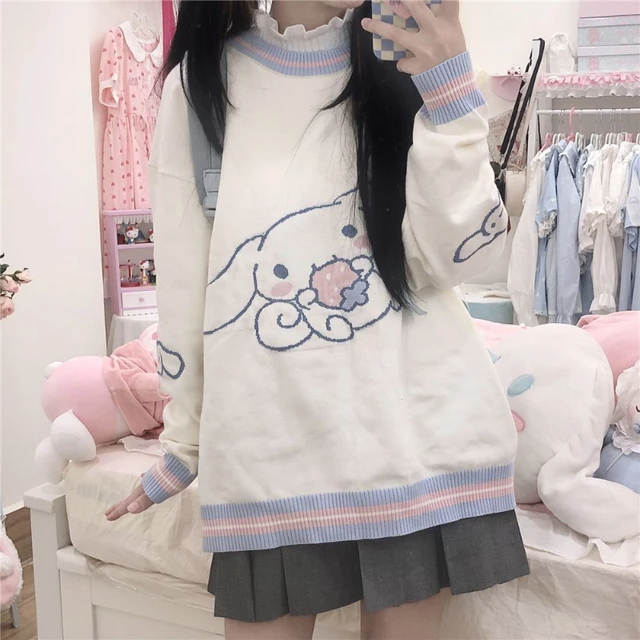
3.3 The Impact of Kawaii Clothes on Fashion and Commerce
The enthusiasm for kawaii fashion has had a significant impact on the broader fashion industry and consumer markets. Retailers and designers are incorporating kawaii elements into mass-produced clothing lines, making the style more accessible to a wide audience. Additionally, the rise of online shopping platforms has enabled niche boutiques and independent designers specializing in kawaii clothes to reach global customers. Contributing to the culture’s spread and commercial viability. This intersection of commerce and cuteness has created a thriving market where both consumers and creators can share in the joy of kawaii aesthetics.
3.3 The Impact of Kawaii Clothes on Fashion and Commerce (Continuation)
As kawaii culture maintains its presence both in Asia and beyond, the fashion industry sees an uptick in demand for garments reflecting this aesthetic. Brands often collaborate with artists and pop culture icons to produce limited-edition kawaii-inspired collections that resonate with fans and newcomers to the style. Moreover, the influence of kawaii on fashion has nudged designers to embrace more lighthearted themes and experiment with pastels and playful prints in their mainstream collections.
Leveraging social media, influencers have magnified the reach of kawaii styles. Inspiring their followers to adapt the trend in a variety of social contexts. YouTube tutorials, Instagram fashion posts, and fashion blogs dedicated to kawaii style provide a rich source of inspiration and guidance for individuals looking to inject some cuteness into their attire.
The commercialization of kawaii has also prompted an upsurge in related merchandise beyond clothes. From home décor to office supplies, the market is awash with products adorned with kawaii imagery, proving that this style has truly transcended fashion and permeated consumer culture at large. The result is a vibrant, multifaceted industry where kawaii serves as a symbol of both personal identity and broader market trends.
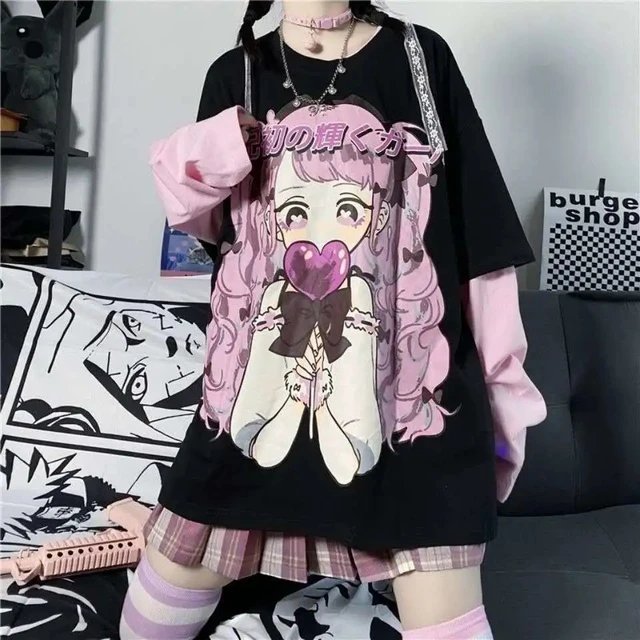
4. Ethical and Sustainable Practices in Kawaii Fashion
4.1 The Importance of Ethical Production
As the popularity of kawaii clothes surges, a spotlight is cast on the manufacturing processes behind these charming garments. Conscious consumers are increasingly inquiring about the origins of their clothing. Preferring to support brands that adopt ethical labor practices and prioritize workers’ rights. Kawaii clothing brands have an opportunity to set an example by ensuring transparent supply chains, providing fair wages. And promoting decent working conditions.
4.2 Embracing Sustainability
The fast turnover of trends poses a challenge to sustainable fashion. But kawaii clothing brands have the potential to break the mold by producing high-quality items designed for longevity. Materials such as organic cotton. As well as investing in timeless pieces that transcend seasonal fads, can reduce environmental impact. Furthermore, upcycling and handmade kawaii clothing items are gaining traction within the community. As they offer a sustainable alternative to mass-produced goods.
